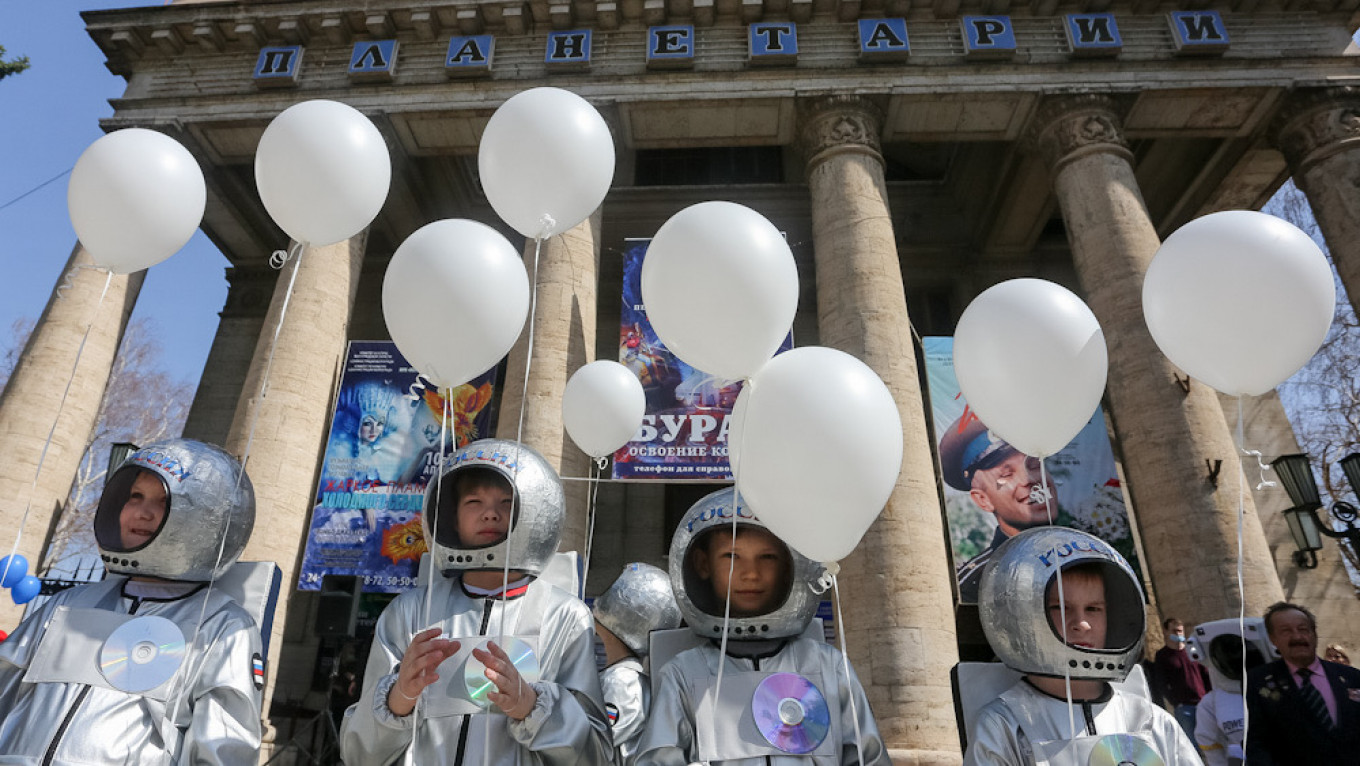
The diamond jubilee of Yuri Gagarin’s historic space flight was marked by celebratory events across Russia on Monday, the sheer spectacle of some nearly matching that of the landmark launch itself.
On April 12, 1961, then 27-year-old Gagarin embarked on a 108-minute journey orbiting Earth, becoming the first man in space. Sixty years later, his achievement, which remains a source of national pride, is still celebrated by Russians of all ages and walks of life.
Late on Sunday, residents of St. Petersburg had a chance to witness a space-themed laser light show projected on the city’s famous Palace Bridge while it was drawn at night.
The two-minute laser clip, which featured depictions of Gagarin himself, the Vostok 1 spacecraft and renowned Soviet rocket engineer Sergei Korolev, was accompanied by a musical theme from the 1971 film “Taming of the Fire” that told a fictionalized story of Korolev’s life.
Students of the St. Petersburg-based ITMO University developed a Telegram chatbot that allows users to learn about the events of April 12, 1961, through simulated interaction with the key figures involved.
The staff of St. Petersburg metro — who, much unlike the cosmonauts, work in the depths of the earth — too, prepared a digital gift for the space mission’s anniversary.
A clip, which was posted on the metro’s official YouTube channel, mixes archival footage and shots of metro workers holding Gagarin’s portrait and declaring the now-iconic phrase “Поехали!” or “Let’s go!”
Auto enthusiasts across several Russian cities, including Ryazan, Krasnodar, Yakutsk and Sakhalin, parked their cars in the shape of Gagarin’s famous phrase to ensure it’s visible from high above.
In the city of Novgorod, located some 540 kilometers northwest of Moscow, 500 drones in the shape of Gagarin’s rocket flew into the night sky on Sunday. The drones then reassembled in the air to resemble the shapes of Sputnik 1, the first artificial Earth satellite launched by the U.S.S.R. as well as the Mir space station.
Residents of the Siberian city of Omsk were able to celebrate Cosmonautics Day by riding a space-themed trolleybus.
Not all celebration initiatives, however, were successful. A 17-meter tall cosmonaut-shaped balloon installation in Krasnoyarsk, the third-largest city in Siberia, was torn apart by the wind. The dramatic event was caught on footage that quickly went viral on the Russian internet, with many users comparing it with the struggles of Russia’s space industry in recent decades.